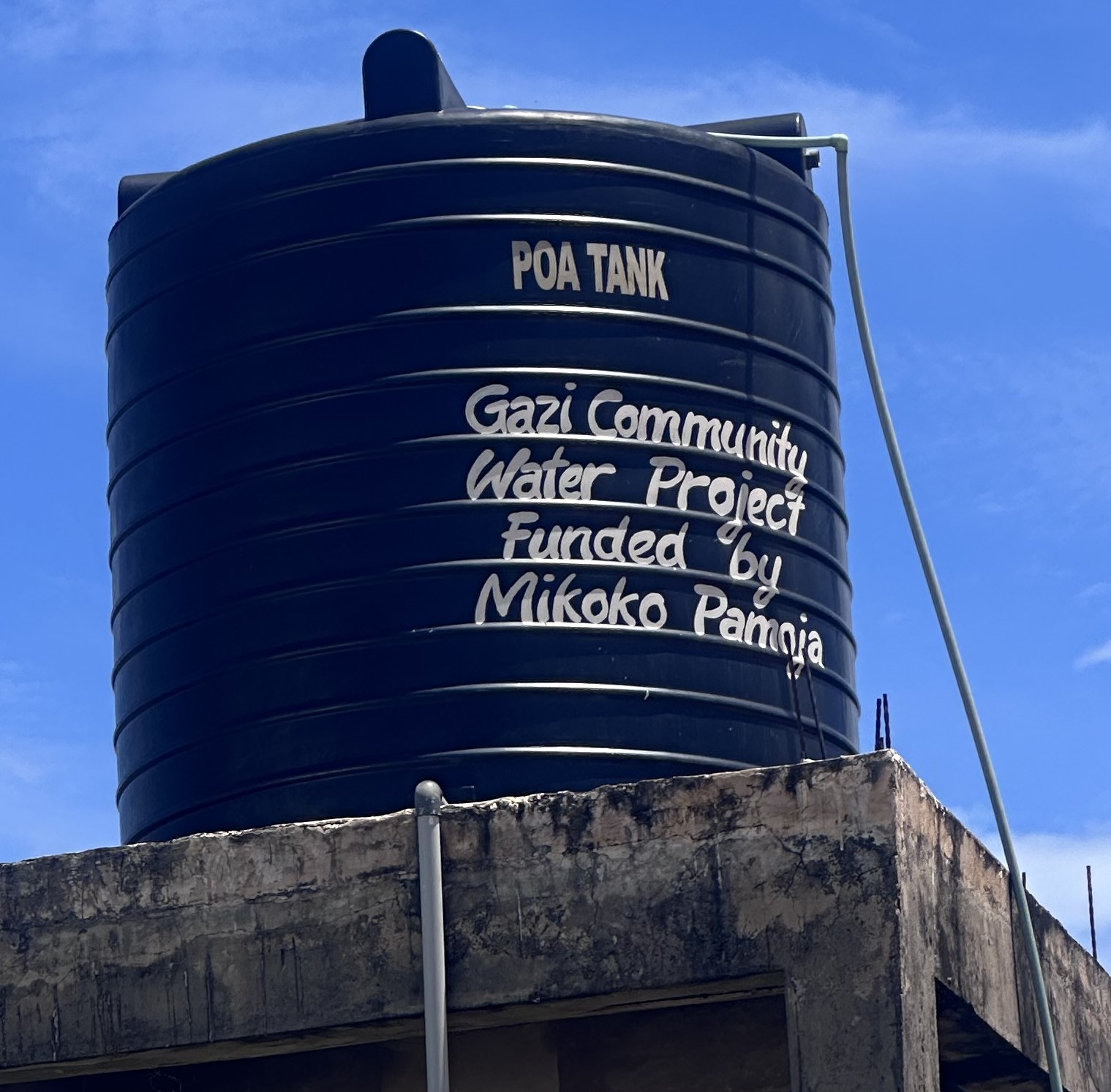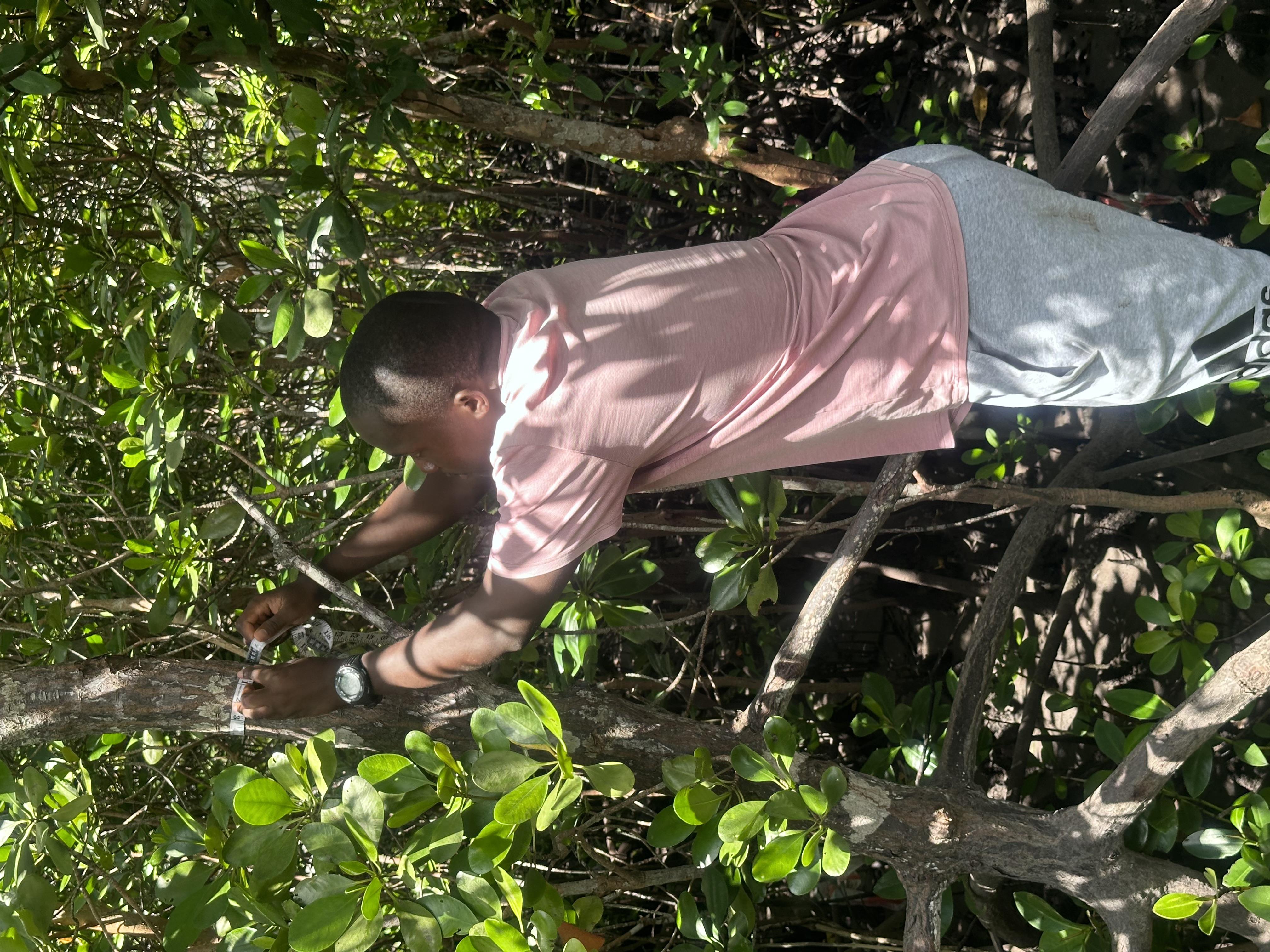Section of the mangrove plantation managed by the Mikoko Pamoja Project
Like in most parts of the world, mangroves in Kenya are endangered. Along with climate change impacts such as rising sea levels and temperatures, mangrove forests are being depleted because their wood is valuable and prized by coastal communities as a prime source of timber for construction, fuel, and even medicines. Rampant coastal urbanization, and unsustainable agriculture and aquaculture practices round out the long list of challenges.
The mangrove trees in Kenya represent approximately 3% of natural forest cover, covering more than 60,000 hectares. Around 60% of the mangroves occur in Lamu County, in the northern part of Kenya, while in Kwale county, in the southern part of Kenya, there is about 14% of mangrove cover. Globally, there are about 60-70 species of mangroves. In Kenya there are only 9 species of mangroves, with the most dominant species being Rhizophora mucronata locally identified as ‘mkoko’. They are the only trees that thrive in salty waters and improve water quality by filtering out nutrients and sediments. They also extract up to five times more carbon than forests on land, incorporating it in their leaves, branches, roots and the sediments beneath them (UNEP 2023)
Over the past three years, UN agencies, the Kenyan Government and other key partners have joined forces to launch several community-based mangrove conservation projects. They aim to help tackle poverty and deliver climate, biodiversity and local-level benefits to communities on the Kenyan coast. Among them include Mikoko Pamoja, a community driven project generating revenue from the conservation of approximately 1,170,000 mangrove trees on 117 hectares, allocated by the Government of Kenya. Before the project was established the over 5,400 adjacent community members did not have proper access to water, decent sanitation, proper health facilities and education facilities. Additionally, soil erosion and lack of fish (staple food) were also major challenges. After the project was established with an aim to conserve and restore mangroves through community engagement and participation, the community’s access to these facilities was improved.

Water tank donated by Mikoko Pamoja project for provision of water to the adjacent community members
The conservation and restoration of mangroves is achieved through conservation activities, awareness creation, and the sale of mangrove carbon credits. Plan Vivo, an organisation that helps communities plant trees and generate carbon credits, validated Mikoko Pamoja to sell at least 3,000 metric tons of CO2 equivalent per year from 2013 to 2033. This arrangement is expected to generate annual revenue of about $130,000. According to the Project Manager Kassim Juma Mikoko Pamoja becomes the first-ever blue carbon initiative in the world that has sold carbon credits from mangrove conservation activities for community development.
Forward-thinking businesses buy the credits, NGOs, universities and individuals who are looking to manage their carbon footprints, while supporting people and nature. The returns are channelled to support local development projects through a benefit sharing mechanism including provision of water, decent sanitation, education facilities, health centres and environmental conservation.

Mikoko Pamoja Project Manager, Kassim Juma demonstrates how to measure and determine size of mangrove trees
The UN-REDD Programme also puts mangroves at the heart of REDD+ action. The integration of mangroves into REDD+ implementation initiatives aims to reduce net greenhouse gas emissions by focusing on the role of mangroves in achieving the goals of the Paris Agreement. Thriving mangroves remain critical to the future of many of the world’s most vulnerable coastal communities. Rich in biodiversity, they serve as nursery grounds for fish and shellfish, while their roots act as a filter for sediment, cleaning up waterways. They also provide natural protection from storm surges and flooding, whose severity is being exacerbated by climate change. Protecting mangroves and restoring damaged ones therefore helps combat climate change through carbon sequestration as they are some of the most carbon-rich ecosystems on the planet, storing on average 1,000 tonnes of carbon per hectare in their biomass and underlying. (UNEP 2023)



